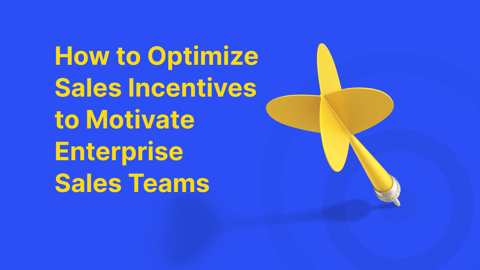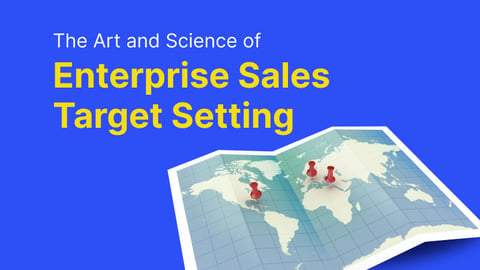Some of the best and most useful technologies in the sales space today are predictive analytics tools. Machine learning and AI, for the most part, fall into this category. Predictive analytics tools typically proceed according to a 2-step process: first, they apply computational sophistication to a set of data, looking for trends that connect inputs – or predictors – to an outcome. Second, they apply those trends to individuals with unknown outcomes to generate individual level predictions.
For instance, an AI model could look at all the factors that go into your team’s sales performance, and identify a set of important factors – perhaps that’s prior sales success, sales experience, the market potential in the salesperson’s territory, an individual’s quota, and so on. Then, the AI model will apply those trends to generate a prediction for a given individual. “For Salesperson A, based on her prior sales success, experience, market potential, and quota, we expect her to sell $1.4M next year.” If you have a 100-person team, then AI will generate 100 individual level predictions.
But how, exactly, should sales leaders use this kind of information?
Three Ways Predictions Can Confer Value to Sales Teams
First, planning. If you know the predicted sales for each person on your 100-person team, you can simply add up all the total predictions for a bottom-up sales forecast. “Hey, these 100 people have an average predicted value of $1.4M each next year, so my best guess is that we’ll hit $140M in revenue next year.”
Planning is more than just revenue forecasting, of course. If you can predict customer demand – for your product or for resources from IT support or customer success reps – then you can make sure to have enough capacity to meet that demand. Typically, bottom-up demand estimation is more accurate than simply estimating based on historical averages. This is because a bottom-up estimate is specific to the unique attributes of the team currently in the field. Historical averages often don’t account for existing team members’ strengths and weaknesses and current market conditions.
Predictive Analytics Tools Allows for Effective Prioritization
Second, prioritization. Prediction at the individual level means that you can prioritize who merits your attention. For instance, if one salesperson is unlikely to hit quota, then you can intervene with that person to help improve sales. And, conversely, if you see that someone else is likely to have an outstanding quarter or year, you may want to make sure to stay out of that person’s way. Prioritizing means that we can deploy interventions to the people who need them, without wasting resources on those who don’t. Prioritizing, or targeting, allows for managerial customization – that is, rather than making broad decisions that affect entire sales teams, we can selectively choose to intervene in different ways for different people.
Build Impactful Business Strategies with Ideation
Third, ideation. Machine learning and AI models are exceptionally powerful at identifying the key factors that relate to an outcome. Some factors are within our control. For instance, if we learn that attending a sales training program is related to sales success, we might consider mandating that sales program. It is a factor within our control, and ideally, we would run a test to verify whether training, in fact causes performance to increase. (Without a test, we can’t know whether training is merely correlated to sales success, rather than causing it.). If, on the other hand, our AI model showed that “years of sales experience” was an important factor relative to sales performance, we have no such control. We cannot increase or decrease a person’s years of sales experience - other than waiting for the passage of time, of course. Although we cannot control this factor, we can still take meaningful action – for instance, we might choose to hire only those with over a certain threshold of experience.
Today’s most successful sales leaders use AI and prediction in all three ways. Planning is arguably the simplest – we accept what will happen and make sure we are ready for it. Prioritizing is about identifying those most in need of attention and attempting to change what would otherwise happen. Ideating is likely the most difficult – using model outputs to generate ideas about how to build effective business initiatives.
Are you looking to drive better business decisions within your sales organization with predictive analytics? Improve sales performance with intuitive planning, effective prioritization, and strategies built for success. Connect with a Varicent expert today to learn more!




